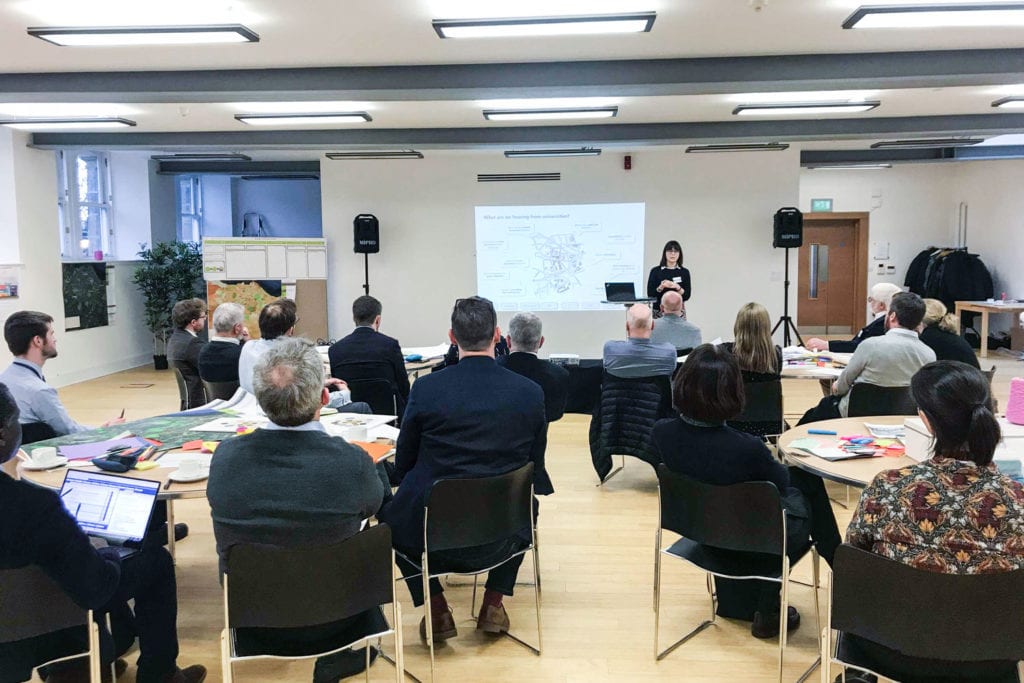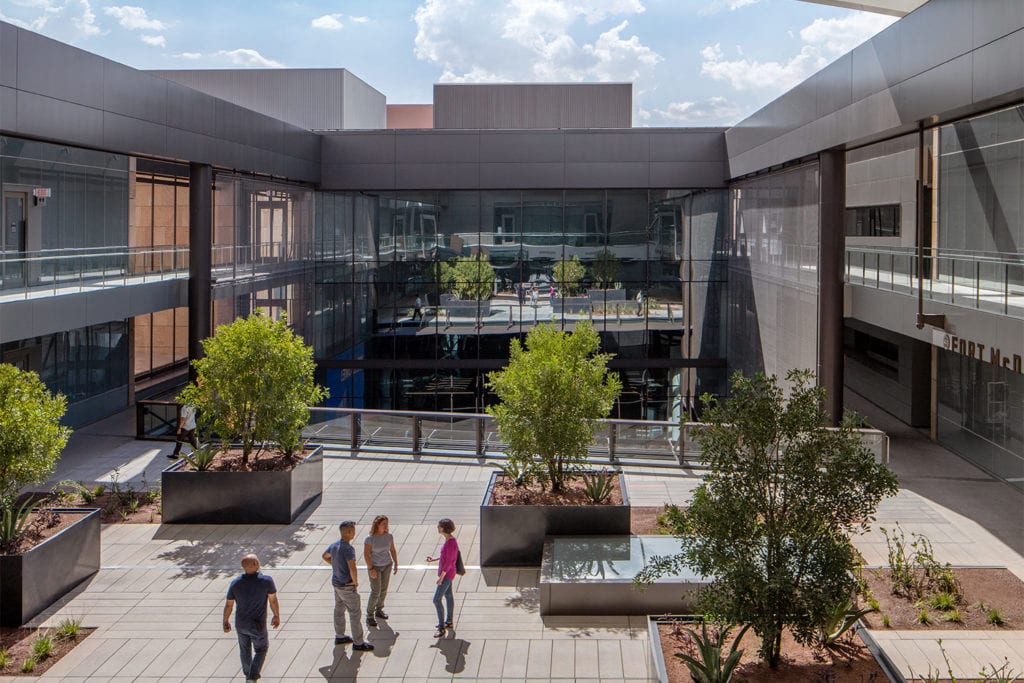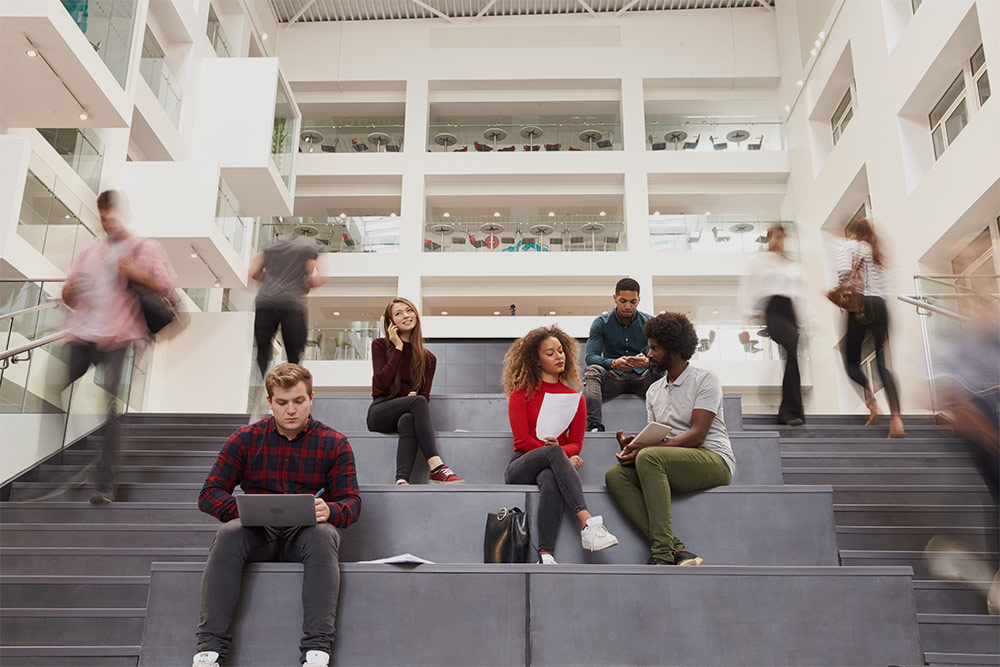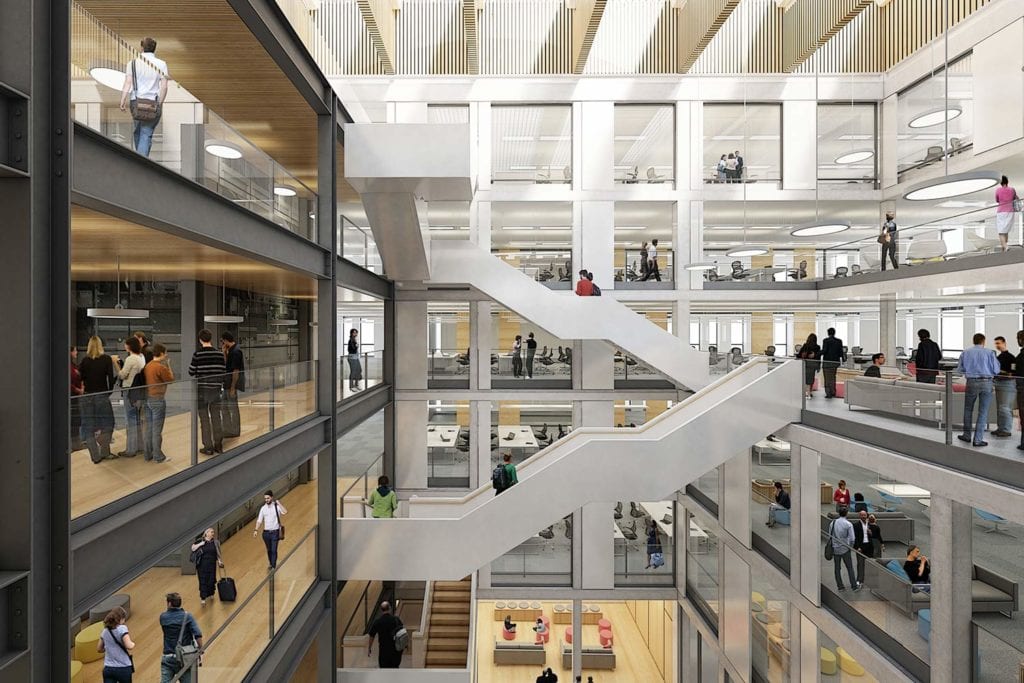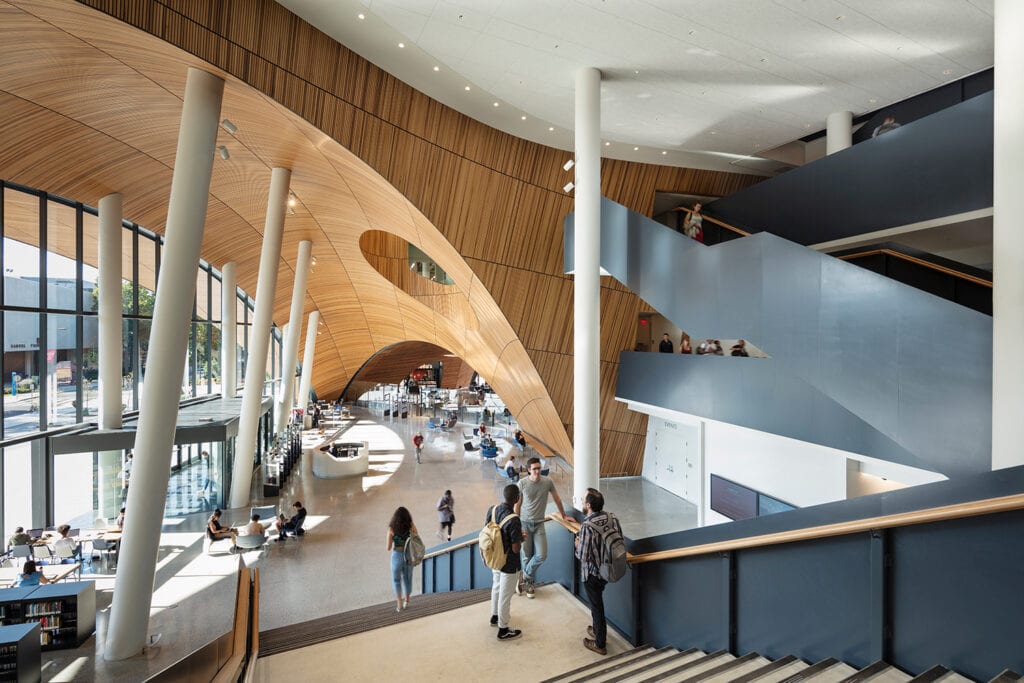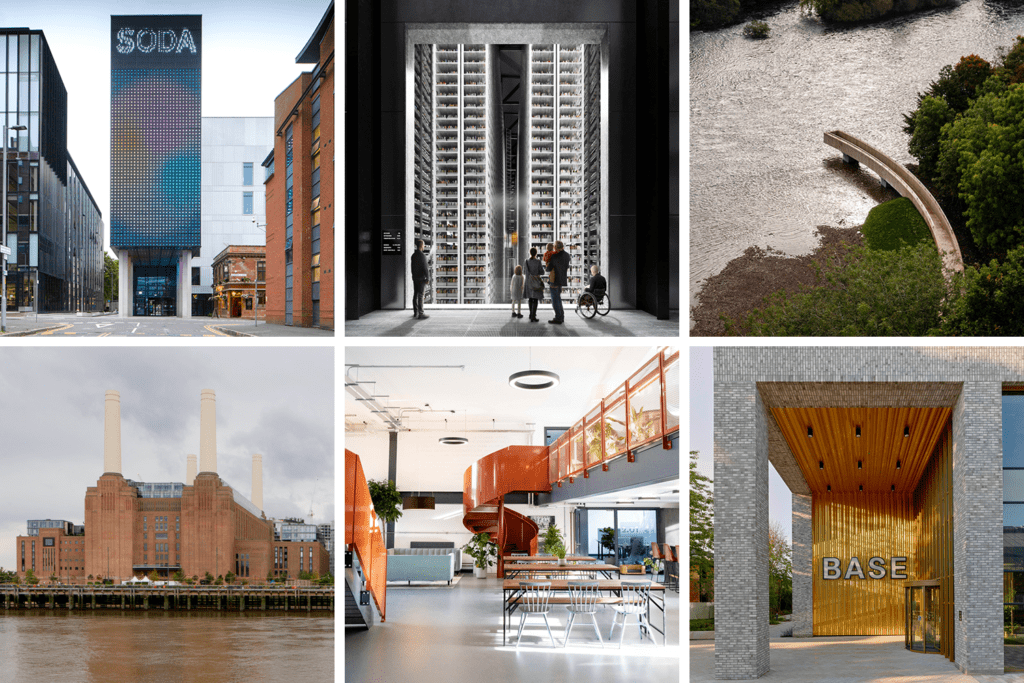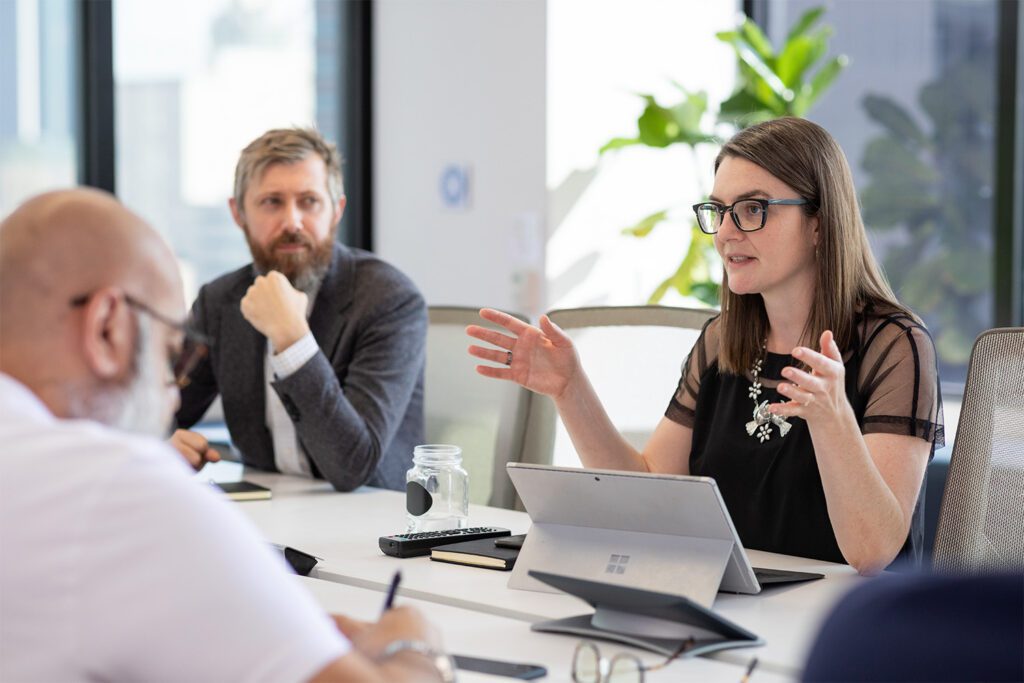Is there a campus of the future?
All the signs are that university life post Covid-19 will be different from that up to now – but how new will the “new normal” be?
Major disruptors always bring about change, however some systems are more resilient and resistant to transformation. Therefore, it is imperative to take stock on what is going on, analyse through precedence and mindfully speculate and pivot for the future.
We have set about such an exercise for the higher education sector by starting with the question: “will there be a need for university campuses in the future?” While it might initially seem an outlandish question, when the soaring costs of debt and equity for investors and operators are weighed against dwindling revenues and diminishing availability for financial support, along with increasing concern about graduate debt, the need to answer this question becomes ever more important.
The past year saw the world’s first “borderless” university launch at a time when value of peer-to-peer engagement is being challenged to its core. And despite yet to turn out to be the revolution they were deemed, massive open online course (MOOC) providers are becoming ever significant key partners to many of the world’s top universities who start to work collaboratively towards embedded degrees.
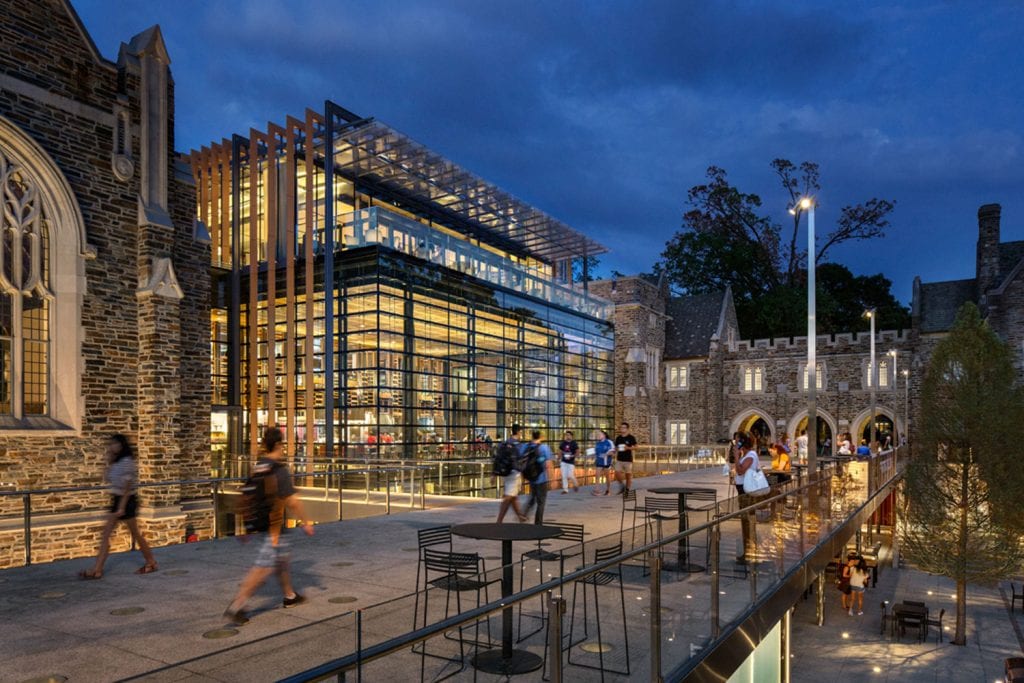
Hey, where’s my campus?
Let’s start with the immediate future: traditionally, universities have used their physical and cultural presence to deliver students opportunity to create communities through social bonds, develop cultural competencies and cross-fertilise ideas to learn from each other and gain unique life experiences. Their physical manifestation has also provided a gateway for international students to experience a locality and gain a foothold in the host nation’s job markets. Have these suddenly been rendered obsolete with recent changes in remote learning?
49% of UK first-year students see becoming an independent adult as one of three most important aspects of a successful student experience – arguably, they need an environment outside the home to help achieve that. Moreover, within the current generation of youth, the GenZ, 57% prefer learning via in-person activities with their classmates, compared to 38% of the preceding millennials.
American Council for Education research suggesting acknowledging the need for students to get to know faculty in their first year with their continued success through their course puts into question whether this could be replicated successfully, virtually. Scientific evidence also suggests socioemotional dimensions of learning cannot be separated from the sociocognitive – successful learning requires “togetherness”.
There’s another value-add to collective learning; the many skills gained by those taking part. This is where “today’s skills will be irrelevant for tomorrow” idiom is rendered irrelevant when skills such as reasoning or decision-making are taken into account, which are overwhelmingly human-dominated, according to a recent World Economic Forum report. Where and how these skills will be delivered is at least as important – emphasising the importance of the physical environment, whether in the design of future of learning spaces or those in which students live, play or simply interact with each other.
recent investments into mental wellbeing support have yet to transition online, potentially depriving students from much-needed access to support services
And it’s not only about added value; opportunity costs are significant, too: recent investments into mental wellbeing support have yet to transition online, potentially depriving students from much-needed access to support services. In the current situation, 67% of 18 to 24-year-olds are finding it difficult to stay positive about the future while self-isolating.
For those coming from disadvantaged socio-economic background, campuses can be places where disparities are equalised; these disparities are resurfacing in the virtual world. At Buro Happold, we have been working on this theme for the last few years, yet the sector has been lagging in its take-up.
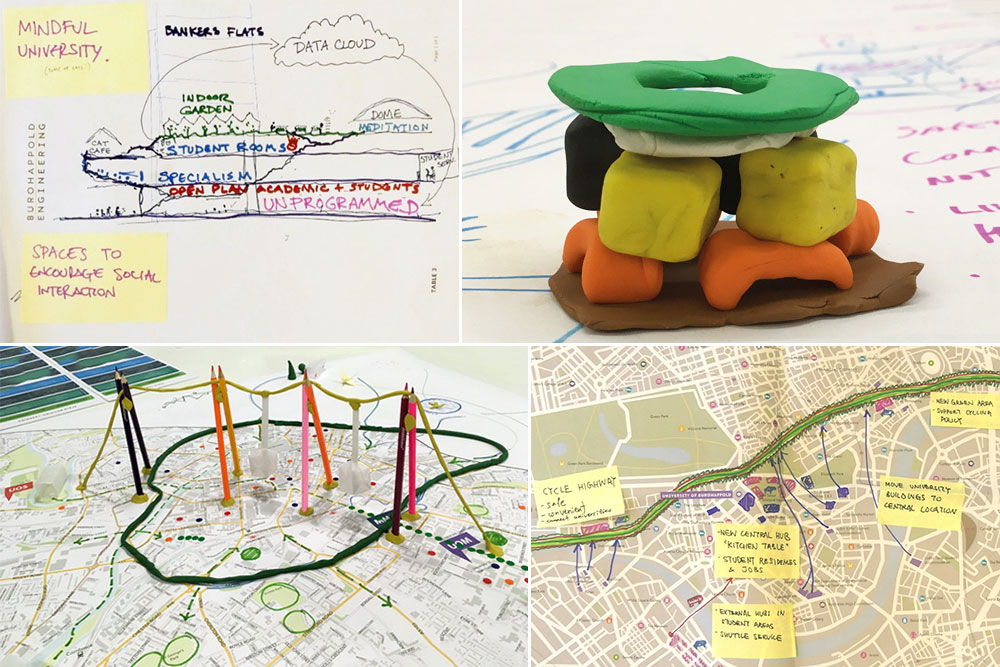
Returning to the immediate future: even in the most socially-distanced of scenarios, today’s campuses will not disappear overnight. If they did, their regions would permanently lose many jobs, universities would be deprived of necessary revenues, and their symbolism and importance as key anchors of the intellectual and cultural capital of a city would evaporate.
Looking down the gaping hole
In the UK, around half (£19.9bn) of the UK HE sector income for 2018-2019 came from tuition fees with about a third from international students, many of whom on one year taught master’s courses. International students contributed $42.4 billion to the US economy in 2017, through tuition, room and board, and other expenses. So, when nearly half of global students plan to defer next year’s enrolment, how will universities deal with the finance gap — and its impact on operations?
At a webinar organised by Times Higher Education on 23rd April, 2020, with three former UK Universities Ministers, David Willetts argued that international appetite to study in an English-speaking country will remain, indicating a bounce-back in the medium-term.
Jo Johnson signalled at students from India or African countries to fill the gap, but acknowledging that they may not want the full, three-year courses, new embedded courses would need to be provided, necessitating investment into technology-based innovation in digital practices.
Both suggestions are intrinsically linked to a post-Brexit strategy of market expansion and mean an end to the traditional bundled degrees, something that was being mooted long before Covid-19. It is argued that this transition is inevitable but can be achieved owing to the UK’s world-leading research capabilities and to its high-quality academic staff.
In the United States, the Congress has decided to allocate $14 billion to colleges and universities as part of its $2 trillion stimulus package, yet still far short of what’s being asked for by higher education leaders. This comes at the back of an expected 20% drop in enrolment for the first term of next academic year which could see some colleges shut their doors if lost revenues are exacerbated by lack of campus-based activities.
Parents have weighed in on the issue voicing their preference to send their children to campuses over distant learning but with financing becoming a greater issue, colleges are looking for short-term fixes like changing admission deadlines to facilitating microfinancing. 2-year community college enrolments are expected to continue rising over 4-year courses in the wake of financial difficulties, requiring a rethink of programmes offered by universities across the sector and transition to more embedded and flexible programmes.
Universities would not be doing this transition on their own. They’d be pushed towards further horizontal integration across the sector through knowledge exchange mechanisms and a much-needed increased partnership with the industry. In the UK, this can unlock the Government bail-out to increase innovation funding to help reduce universities’ reliance on cross-subsidisation from international student fees, while assisting in rebalancing the economy, supporting local growth and reskilling the communities; while in the US, help colleges make best use of the help (however short of sums demanded) they receive.
A better aligned industry-academia partnership
When businesses step in to help build and deliver skills; this can help alleviate shortages in skills, while providing the industry a better handle in steering the future direction of skills training and development of future labour force. Government’s role would be to support social mobility, lifelong learning, and the growth in degree apprenticeships among underrepresented groups.
Further education providers can step in now to work with businesses to offer six-month training and placement courses to soon-to-be graduates who won’t find a welcoming job market.
In return, this can help the HE sector to cast a wider net to the society to enhance access and equity, building on the stories of some of their recent good deeds, whether in providing accommodation to healthcare workers, transforming unused assets into hospitals or utilising 3D printers to provide personal protective equipment. At Buro Happold, we have precedent, exemplified by our collaboration with Rogers Stirk Harbour + Partners and ChapmanBDSP for the Wellcome Trust in designing and building a mobile health clinic.
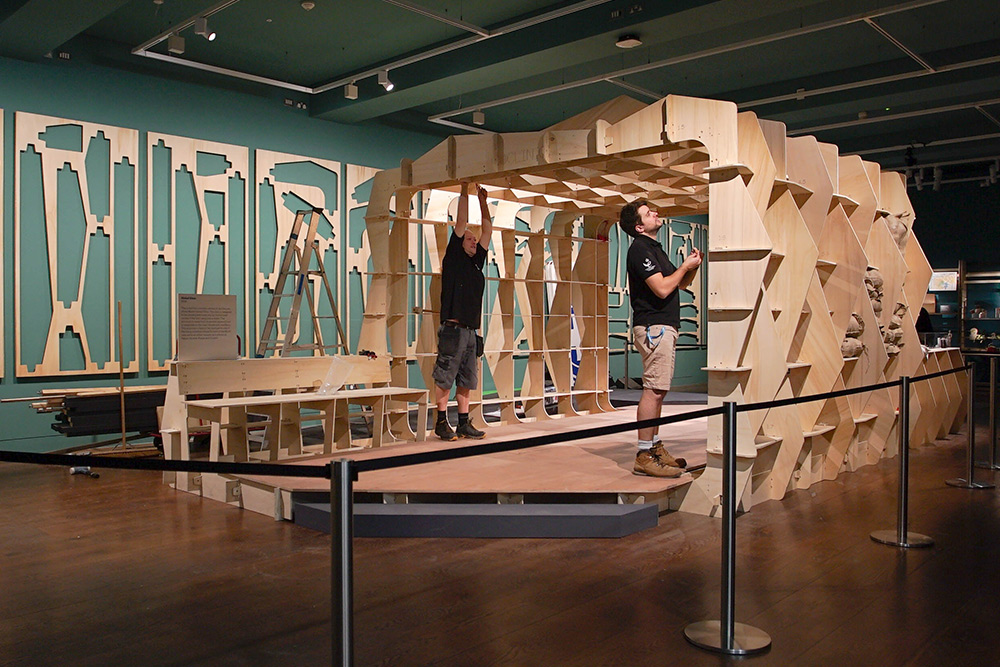
universities will need to be agile: better utilise their assets towards multi-use and functions, which would mitigate risks of stranding them, yielding surplus space that can be utilised to unlock co-benefits for the wider community
There is a lot more a good neighbour can achieve for the long-term socio-economic sustainability for their host towns where many jobs will have been lost. To achieve this, universities will need to be agile: better utilise their assets towards multi-use and functions, which would mitigate risks of stranding them, yielding surplus space that can be utilised to unlock co-benefits for the wider community.
Buro Happold investigates the Campus of the Future
Campuses and university buildings will be with us for some time longer; probably not fully residential, nor fully virtual but a hybrid in between: multi-functional, and multi-dimensional.
The pace of change and how universities address the current and future challenges will vary but all will have profound impacts: on social aspects such as quality of and access to education, on economic impacts from delivery of future skills to managing campus assets, and on environmental impacts around use and distribution of materials, space and energy.
At Buro Happold, we bring our experience and understanding from working with more than 60 universities in the UK and over 100 across the world to investigate, debate, and respond to these challenges of the Campus of the Future.
We are continually engaging with our clients, city leaders, community stakeholders and design partners across the commercial, education and science and technology sectors to help track, evaluate and analyse data towards more efficient use of campus spaces, to prevent them from stranding and prepare for technologically-enhanced smart solutions.

We employ our consulting, digital transformation and sustainability specialisms to investigate returns on investment into innovation and delivering socially inclusive development and environmentally sustainable management projects.
Building on our previous survey of over 5,000 students on mental wellbeing, we have recently embarked upon asking students, academics, and facilities and directorship staff to gain live insights on their institutions’ responses to the ongoing epidemic. Early results show both students and faculty members still hugely value continuous engagement with their peers, while faculty staff are overwhelmingly supportive of closer integration with Industry and investments into technological infrastructures.
early results from our survey show both students and faculty members still hugely value continuous engagement with their peers
While many have an appetite to embrace an increase in virtual learning, physical environment will play an important supporting role in the process: virtual contact will not mean total isolation; it will be accompanied by more group working and contact with academics and teachers as part of embedded learning and development.
In the coming posts, we will be applying the post-Covid-19 lens for more detailed investigations on access and equity, asset management and efficiency, innovation and productivity, net zero carbon campuses, smart infrastructure, space utilisation, and how to create a holistic offer that is greater than the sum of its parts.

